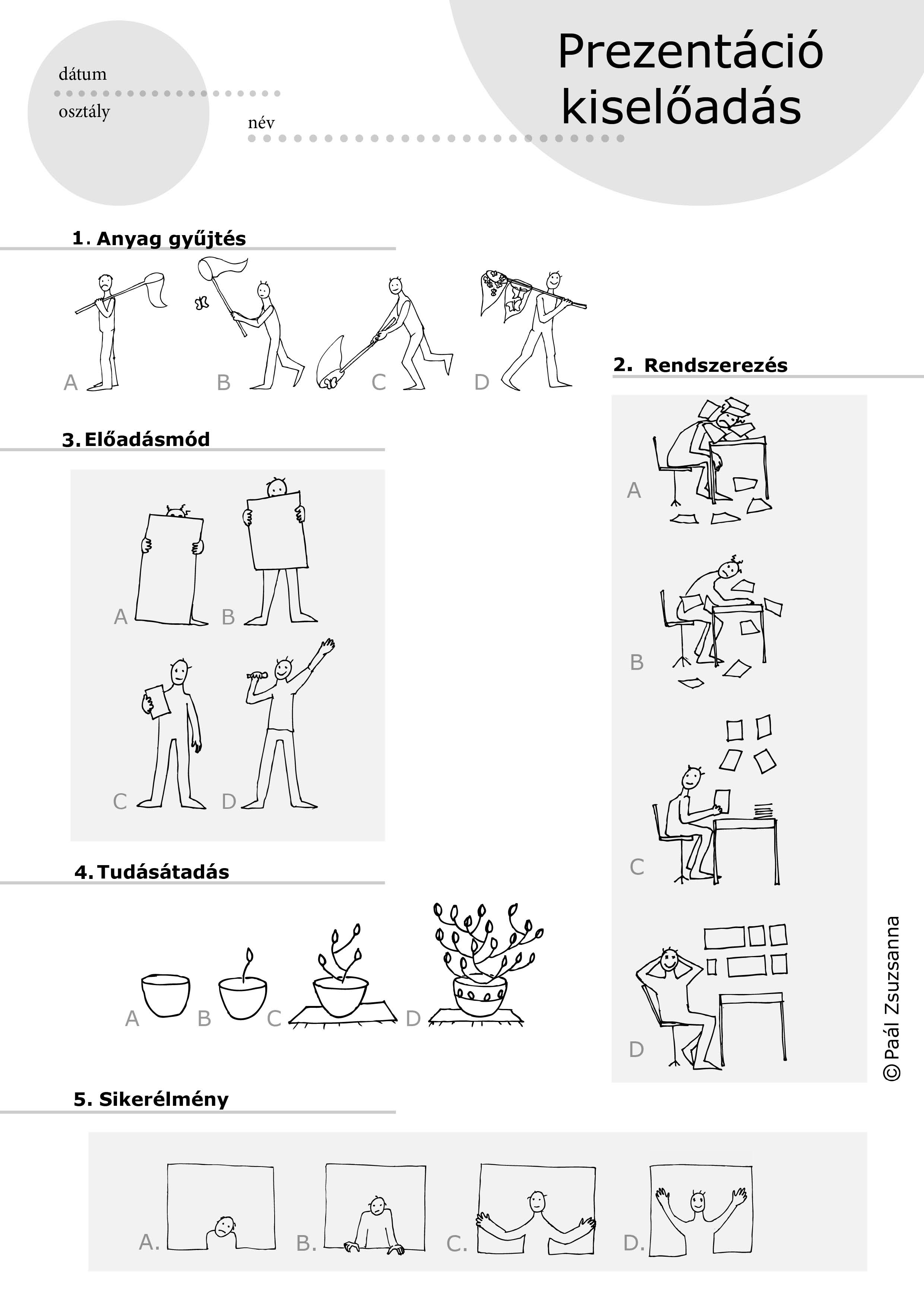
Presentation. Visual (self-)evaluation sheet.
Four subtopics: 1. Collecting information; 2. Synthesis; 3. Mode of presentation; 4. Knowledge transfer
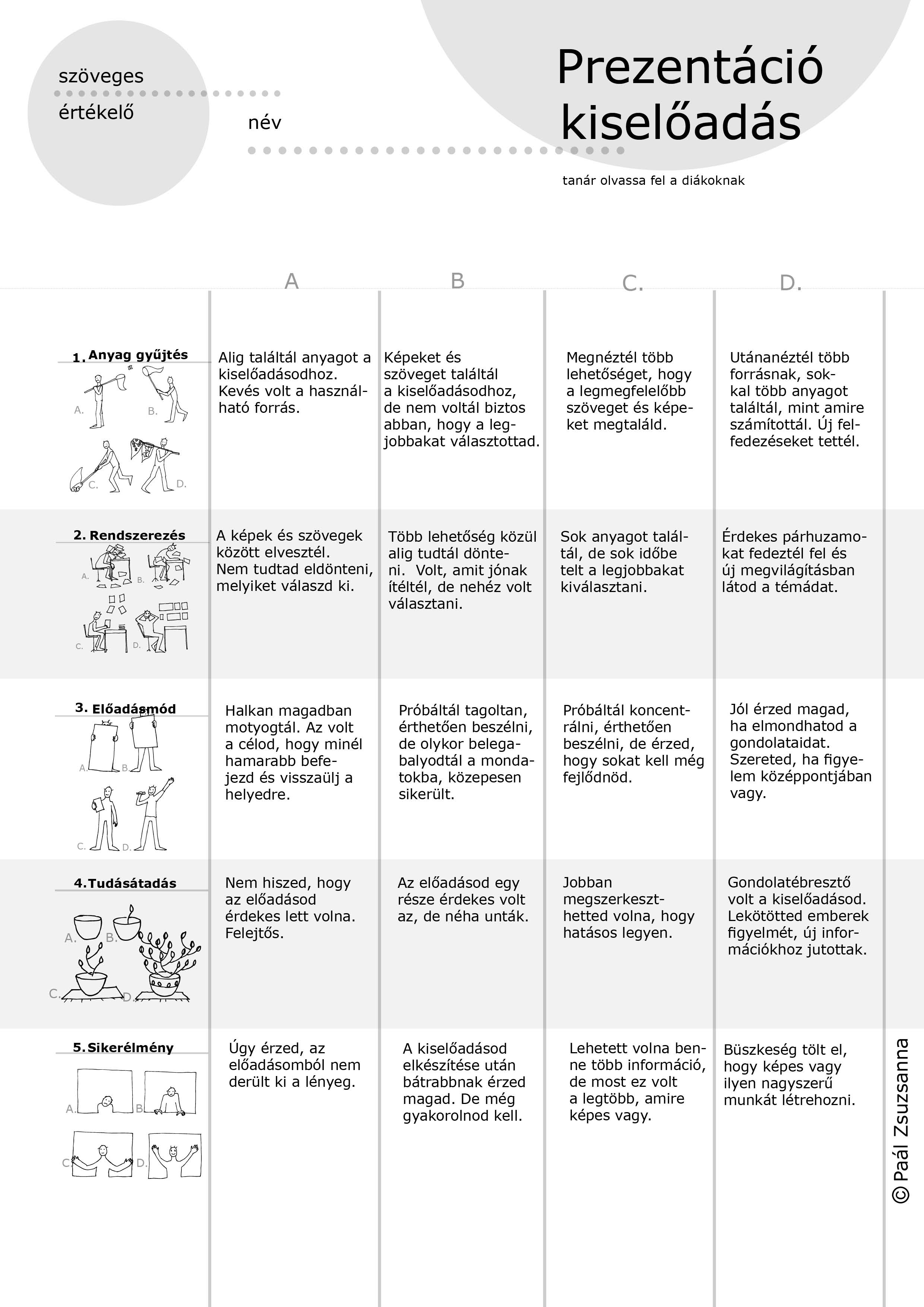
Presentation. Verbal (self-)evaluation sheet.
The verbal evaluation sheet is read out by the instructor. Line by line. Once students mark their own answers on the visual evaluation sheet, we can go on to the next topic.
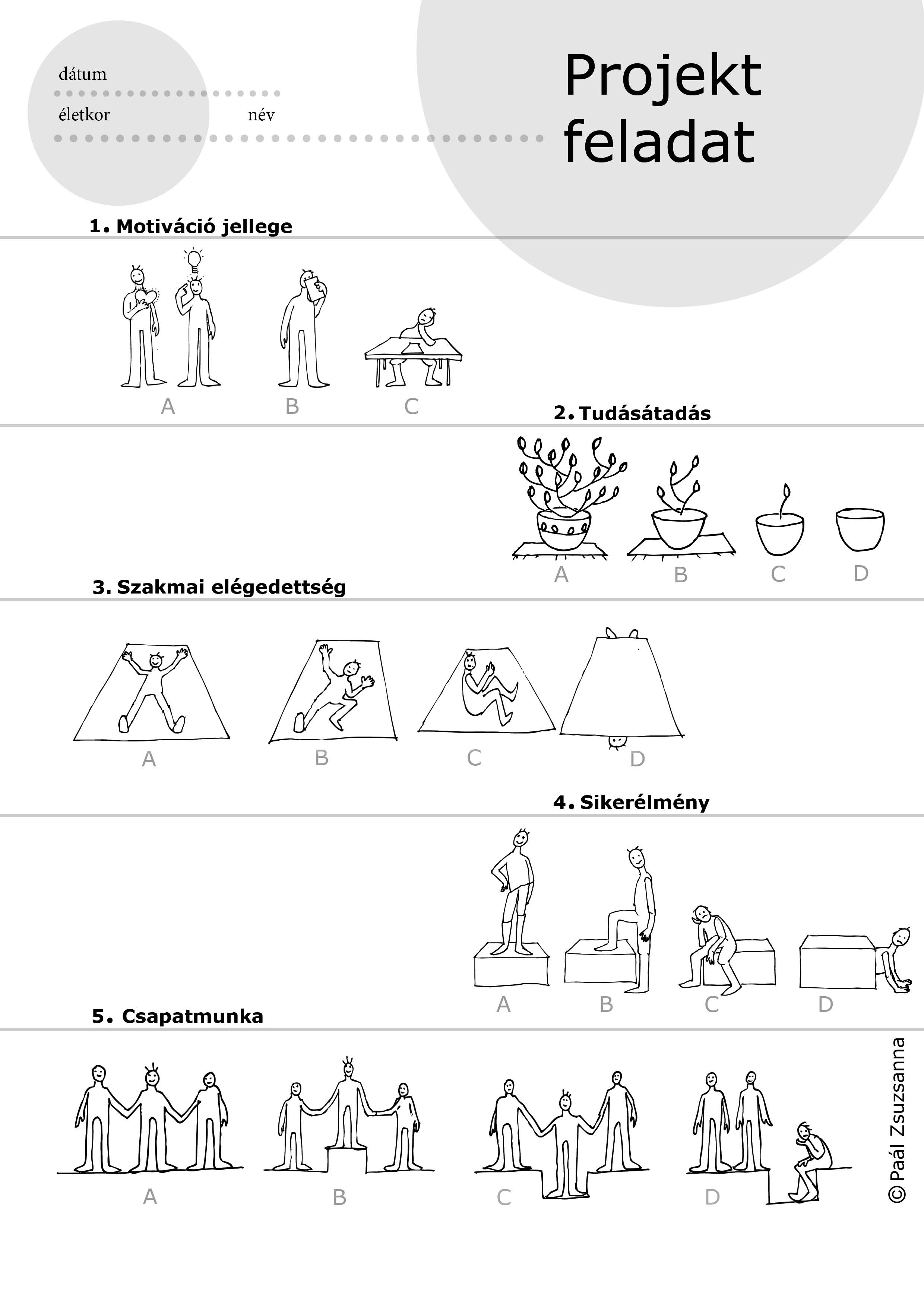
Project assignment. Visual (self-)evaluation sheet.
Teamwork is one major element in any project assignments. Interrelation among students. Role within the team. Other aspects of assessment are motivation, professional satisfaction and sense of success.
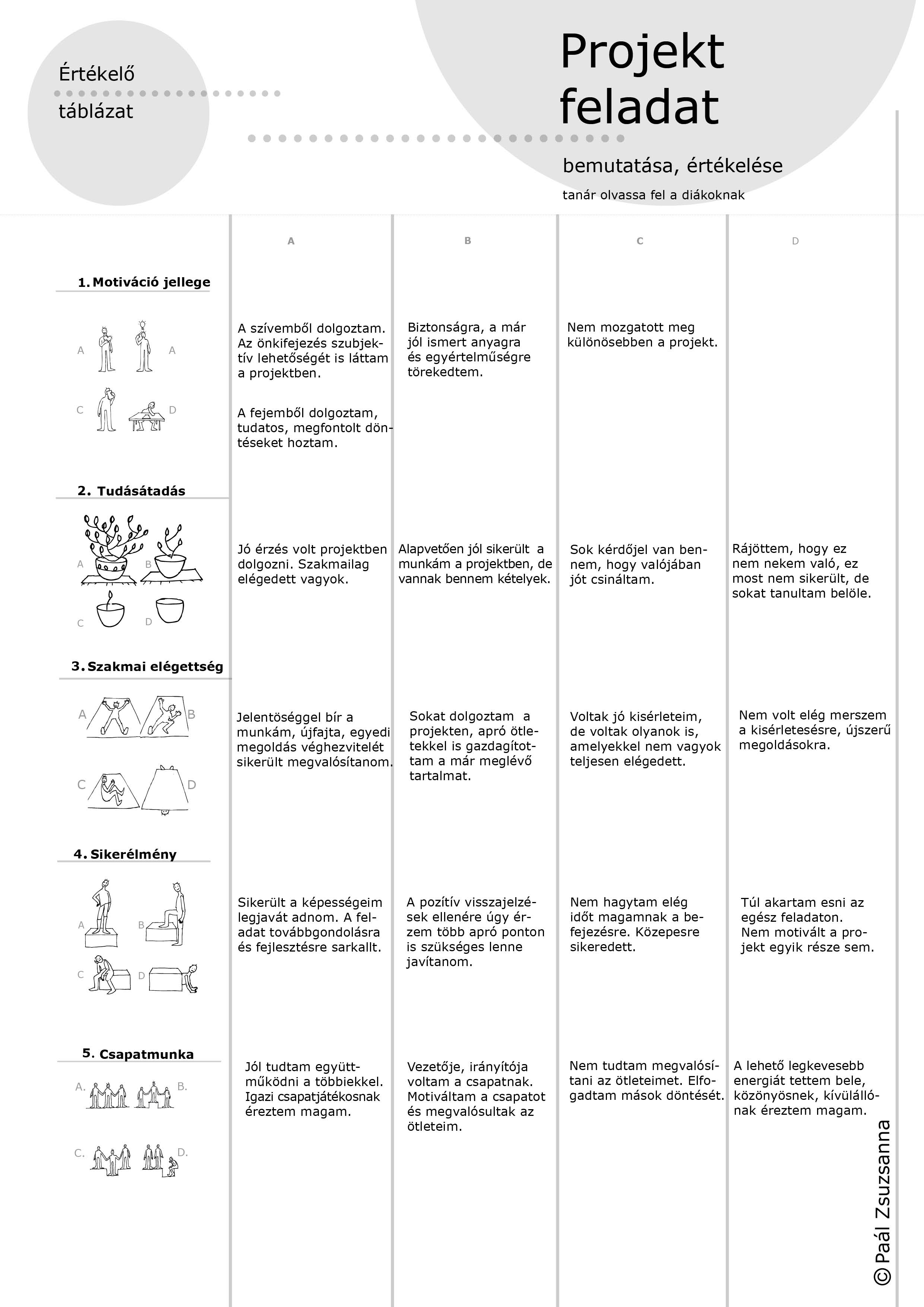
Project assignment. Verbal (self-)evaluation sheet.
While distributing the self-evaluation sheets, we might talk about this method as a different kind of evaluation tool. We might also point out that their grades do not depend on these evaluation sheets since it is not a qualifying kind of assessment.
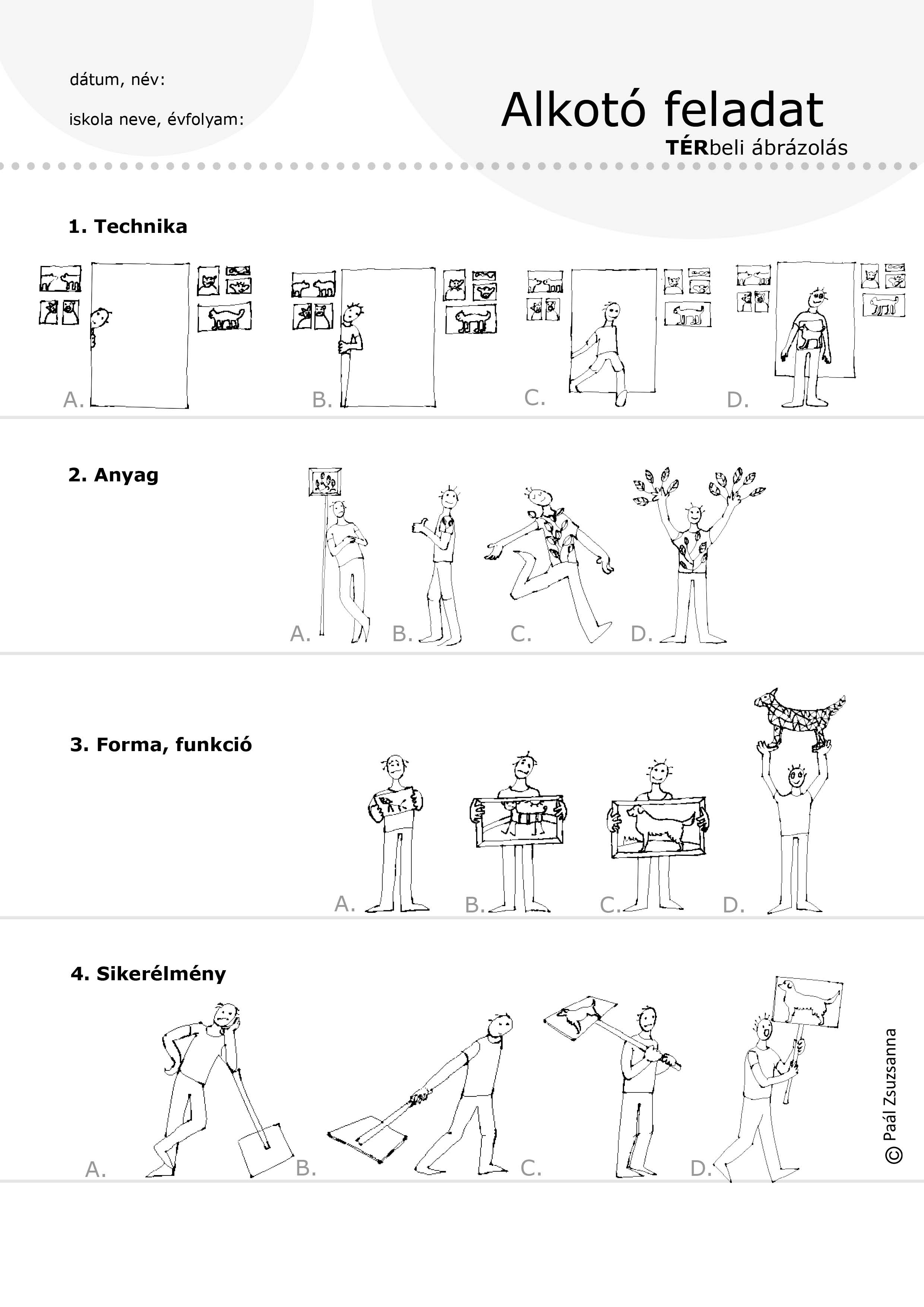
Creative visual (self-)evaluation sheet. Spatial representations.
Criteria for assessment: use of forms, use of materials, spatial representation.
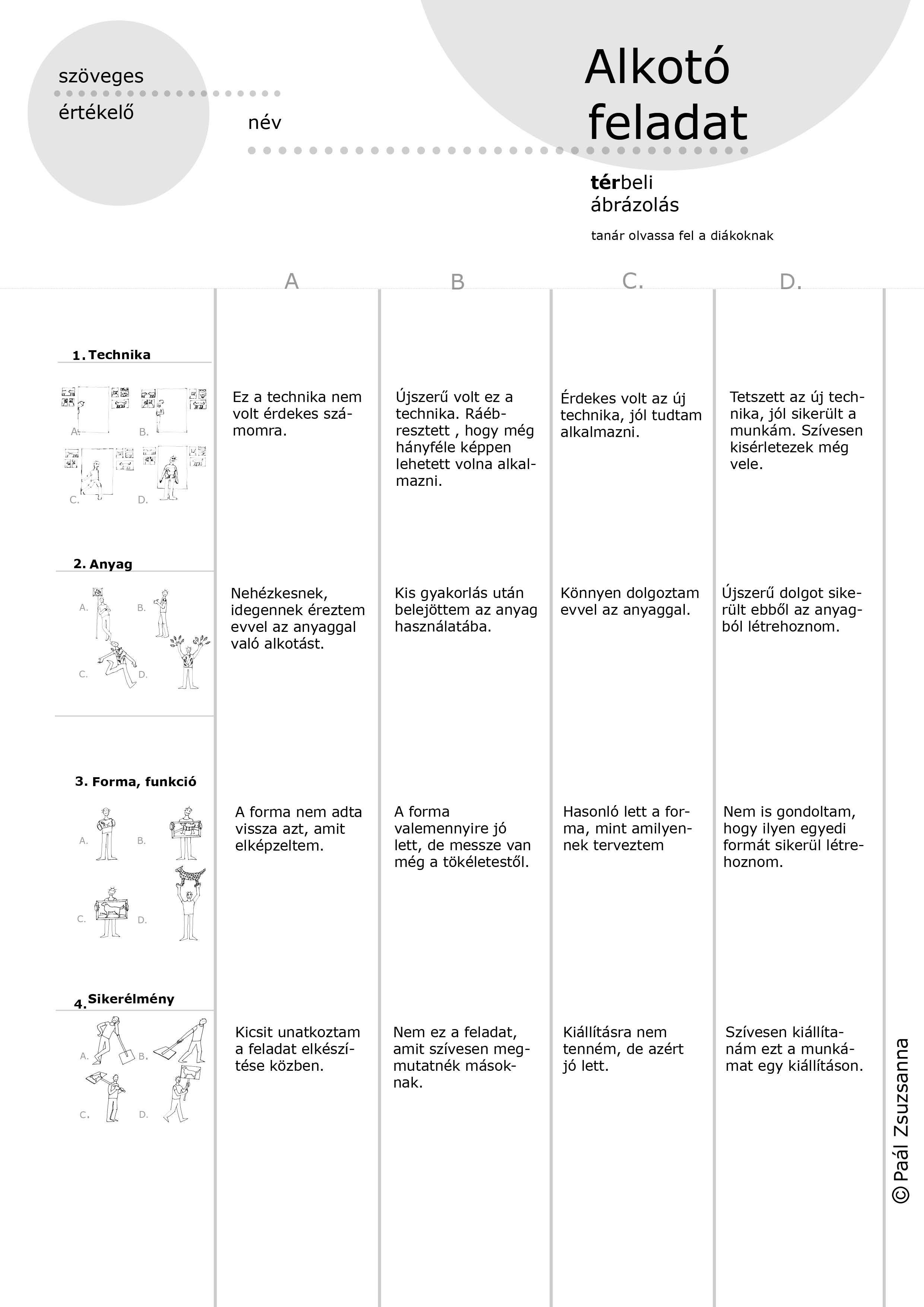
If after getting acquainted with the filled out evaluation sheets we bump into a specific type of difficulty more frequently, it might be a feedback for us to reformulate this kind of task differently next time. We can use the results of the evaluation sheets to refine our own methodology.
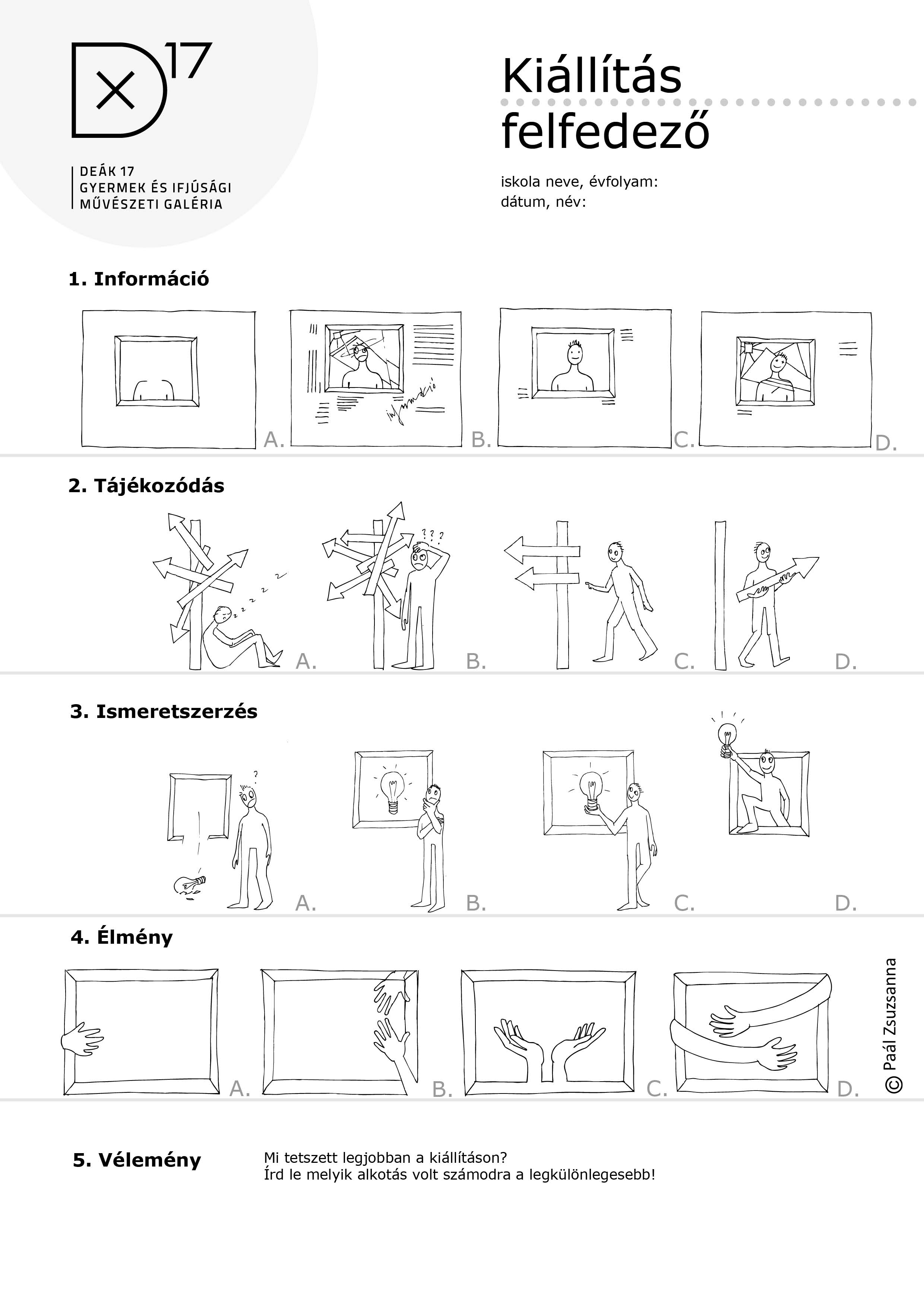
Visual (self-)evaluation sheets can be used in museum pedagogical practices, as well. Their results indicate how the students received and got inspired by the task.
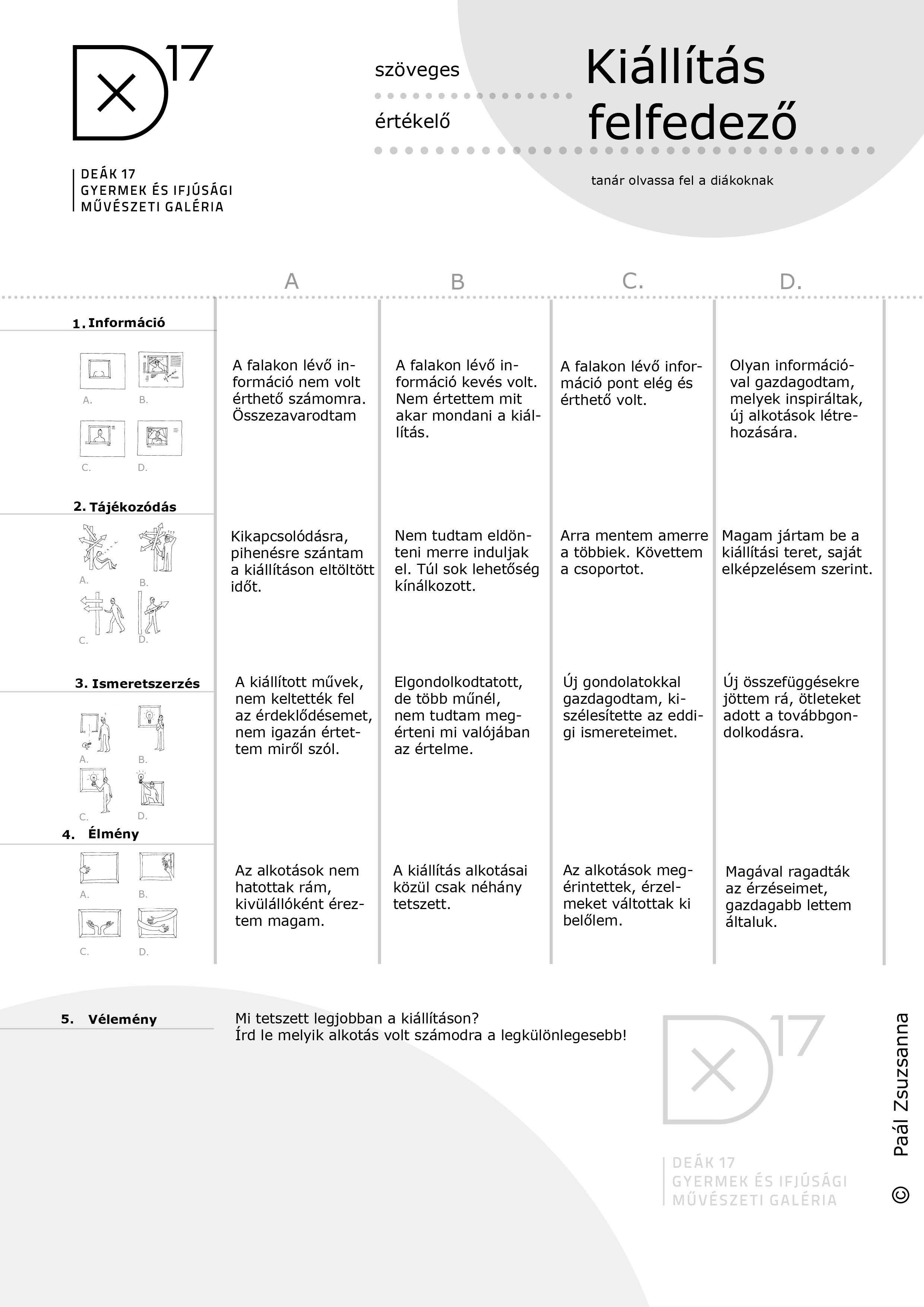
Due to the fresh new experiences it is a good idea to close the session with filling out these sheets.
Visual evaluation sheets
These self-evaluation sheets consist of two parts: a verbal text that is read out loud by the teacher (only one copy needed) and a visual part that needs to be printed out for each student.
Before filling out the form, we need to inform students that we won’t qualify and label anything: they need to simply reflect on their experiences and impressions and complete the sheets accordingly.
They can fill out the form with colourful pencils or pens which can be a creative process by itself. Still, the goal is to give clear-cut answers and feedback to teachers and students with the help of a transparent scale. It provides opportunities for a more personal dialogue between student and teacher, the elaboration of difficulties and finding the solution together.
The humourous pictogram-like figures of the sheets might contribute to an easy-going and honest mode of evaluation removing possible prejudices and negative attitudes of students towards assessments in general.
Teachers of Visual Culture are provided with the opportunity to test and apply my evaluation sheets for free.
Please, get in touch with me and let me know which type of sheet you would like to try. And I will send you the requested forms in email.